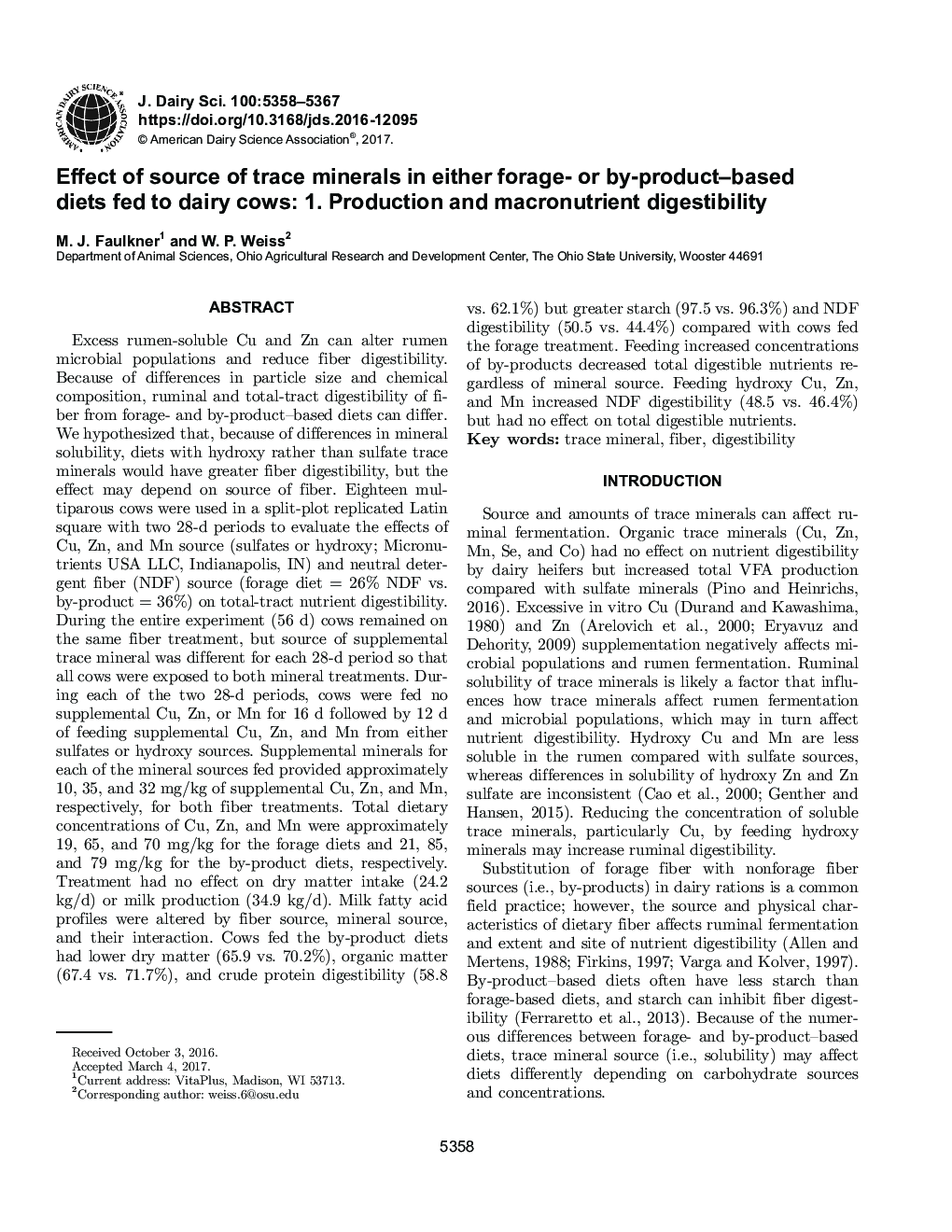| کد مقاله | کد نشریه | سال انتشار | مقاله انگلیسی | نسخه تمام متن |
|---|---|---|---|---|
| 5541743 | 1402510 | 2017 | 10 صفحه PDF | دانلود رایگان |
عنوان انگلیسی مقاله ISI
Effect of source of trace minerals in either forage- or by-product-based diets fed to dairy cows: 1. Production and macronutrient digestibility
ترجمه فارسی عنوان
تأثیر منبع مواد معدنی در هر رژیم غذایی مبتنی بر خوراک یا فرعی به گاوهای شیری تغذیه شده است: 1. قابلیت هضم تولید و مغذی ها
دانلود مقاله + سفارش ترجمه
دانلود مقاله ISI انگلیسی
رایگان برای ایرانیان
کلمات کلیدی
ردیابی مواد معدنی، فیبر هضم
موضوعات مرتبط
علوم زیستی و بیوفناوری
علوم کشاورزی و بیولوژیک
علوم دامی و جانورشناسی
چکیده انگلیسی
Excess rumen-soluble Cu and Zn can alter rumen microbial populations and reduce fiber digestibility. Because of differences in particle size and chemical composition, ruminal and total-tract digestibility of fiber from forage- and by-product-based diets can differ. We hypothesized that, because of differences in mineral solubility, diets with hydroxy rather than sulfate trace minerals would have greater fiber digestibility, but the effect may depend on source of fiber. Eighteen multiparous cows were used in a split-plot replicated Latin square with two 28-d periods to evaluate the effects of Cu, Zn, and Mn source (sulfates or hydroxy; Micronutrients USA LLC, Indianapolis, IN) and neutral detergent fiber (NDF) source (forage diet = 26% NDF vs. by-product = 36%) on total-tract nutrient digestibility. During the entire experiment (56 d) cows remained on the same fiber treatment, but source of supplemental trace mineral was different for each 28-d period so that all cows were exposed to both mineral treatments. During each of the two 28-d periods, cows were fed no supplemental Cu, Zn, or Mn for 16 d followed by 12 d of feeding supplemental Cu, Zn, and Mn from either sulfates or hydroxy sources. Supplemental minerals for each of the mineral sources fed provided approximately 10, 35, and 32 mg/kg of supplemental Cu, Zn, and Mn, respectively, for both fiber treatments. Total dietary concentrations of Cu, Zn, and Mn were approximately 19, 65, and 70 mg/kg for the forage diets and 21, 85, and 79 mg/kg for the by-product diets, respectively. Treatment had no effect on dry matter intake (24.2 kg/d) or milk production (34.9 kg/d). Milk fatty acid profiles were altered by fiber source, mineral source, and their interaction. Cows fed the by-product diets had lower dry matter (65.9 vs. 70.2%), organic matter (67.4 vs. 71.7%), and crude protein digestibility (58.8 vs. 62.1%) but greater starch (97.5 vs. 96.3%) and NDF digestibility (50.5 vs. 44.4%) compared with cows fed the forage treatment. Feeding increased concentrations of by-products decreased total digestible nutrients regardless of mineral source. Feeding hydroxy Cu, Zn, and Mn increased NDF digestibility (48.5 vs. 46.4%) but had no effect on total digestible nutrients.
ناشر
Database: Elsevier - ScienceDirect (ساینس دایرکت)
Journal: Journal of Dairy Science - Volume 100, Issue 7, July 2017, Pages 5358-5367
Journal: Journal of Dairy Science - Volume 100, Issue 7, July 2017, Pages 5358-5367
نویسندگان
M.J. Faulkner, W.P. Weiss,
